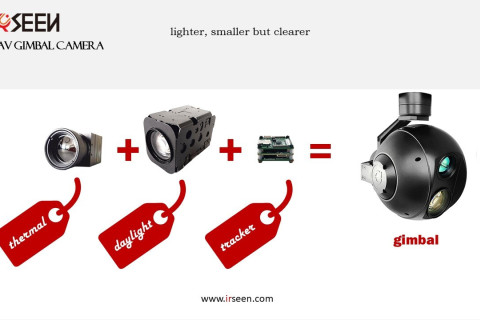
- Home
- >
News
Famous for its compatibility and tracking function, the target tracking thermal cameras made by IRSEEN help many gimbal system manufacturers in building up their dreamed devices——small, light-weight but with practical functions.
Integrating the thermal imaging sensor and the video tracker into a device at size of a normal infrared camera, the series of infrared cameras made by IRSEEN avoids the possible failure of external connection between single devices, which improves the operational reliability.
Tracking is carried out through template matching up methodology that captures and compares a target with its image in previous picture. As long as the moving speed is within 32pixels/frame, the infrared cameras would stably lock and follow it.
The function of target tracking makes the series of infrared sensors more intelligent in UAV/drone applications such as border defense, traffic violation, anti-terrorism etc.
Affine transformation it adopts makes it working stably under illumination and target shape changing. The shutter-free design guarantees the imaging continuity of the thermal camera that makes sure the camera will not loose any target during tracking due to field of view being blocked, something happened a lot to shuttered thermal cores.
Infrared camera is suitable for passive imaging applied as the key night vision system on vehicles. The principle of thermal imaging enables the product to reflect driving environment of a vehicle and to assist the driver in road alignment when it is not conducive to driving, such as fog, smoke, deep dark at night that no light source is available, and strong reflections from headlights of facing vehicles, street lights, traffic signals, traffic signs, etc.
IRSEEN’s target tracking thermal cameras can be integrated into SCBA mask or fire helmet as an auxiliary tool for fire detection. It can be used to determine the position of the flame center, the degrees of combustion and spread while providing a basic information for the commander on the spot, especially in conditions such as smoldering or heavy fog that our eyes can hardly distinguish what happened on the ground.







